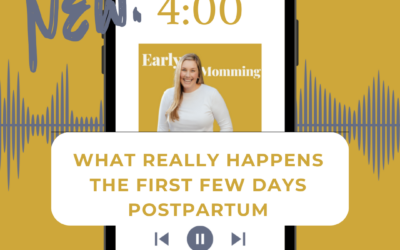
Your uterus is beginning to feel as if it’s contracting. Should you go to the hospital right away, or is this false labor?
You’re coming close to the nine month mark, or already there and you’re just waiting for your new little bundle to join the world.
The lead up to the birth can include some labor-like pains. For many soon-to-be mamas, it can be hard to tell if you’re experiencing real or false labor contractions.
False labor pains can come in the form of Braxton Hicks contractions.
“Braxton Hicks contractions are a bit like a dress rehearsal: Your uterine muscles are flexing in preparation for the big job they’ll have to do in the near future. Keep in mind that while they can be hard to distinguish from the real thing, they’re not efficient enough to push your baby out the way actual labor contractions are,” explains What To Expect.
These contractions can actually start after only 20 weeks of pregnancy for some people, and continue throughout pregnancy. They can get more noticeable as time goes on.
False signs of labor are your pregnancy hormones telling your body to start slowly preparing for childbirth – they aren’t a cause for alarm.

Signs of false labor include:
- Inconsistent contraction-like feelings
- The contractions go away if you lay down or walk around
- Contraction-like feelings that don’t increase in intensity
- Water helps the contractions go away
Whereas true labor:
- Feels like intense cramps
- May be predictably timed
- Feels like a consistent, intense pressure
- Doesn’t go away, the feelings just get stronger
During false labor, I suggest laying on your left side and sipping some water. They will probably go away.
In real labor, you will feel your uterus contracting, and you may experience sensations in your lower abdomen as well as back pain. The contractions should come at consistent and predictable times. These contractions will continue whether you’re sitting, standing, or lying down, and will continue to grow in intensity.
“Should” is the operative word here, as not all pregnancy and birth journeys are the same.
If you think you may be in active labor, follow the instructions from your healthcare provider. Otherwise, consider this a nice warm up to the big day!
To prepare for the big day, click here for my hospital bag checklist.

While false labor is a part of many pregnant mamas’ journeys, it’s important to note that not everyone’s the same and experiences the same things during pregnancy. We are all unique. Don’t just ignore pain! If you’re feeling intense discomfort, visit your doctor.
Don’t ever avoid contacting your healthcare provider because you’re afraid of “bothering” them. They are there to answer any questions and concerns you may have, including whether your contractions are a sign or true or false labor.
Cleveland Clinic points out that it is essential to call your healthcare provider at any time if you have:
- Vaginal bleeding
- Continuous leaking of fluid or wetness, or if your water breaks
- Strong contractions every five minutes for one hour
- Contractions that you are unable to “walk through”
- A noticeable change in your baby’s movement, or if you feel fewer than six to 10 movements in one hour

If you don’t plan on attending a birth class at your hospital or attended one and didn’t gain much, my course, Birth Made Simple, may be a great resource for you. In this course I cover false vs true labor, how to deal with labor pain, the first 48 hours with your newborn and so much more. This course acts as a guide so that you know what to expect and allows you to feel empowered as you prepare for childbirth.




